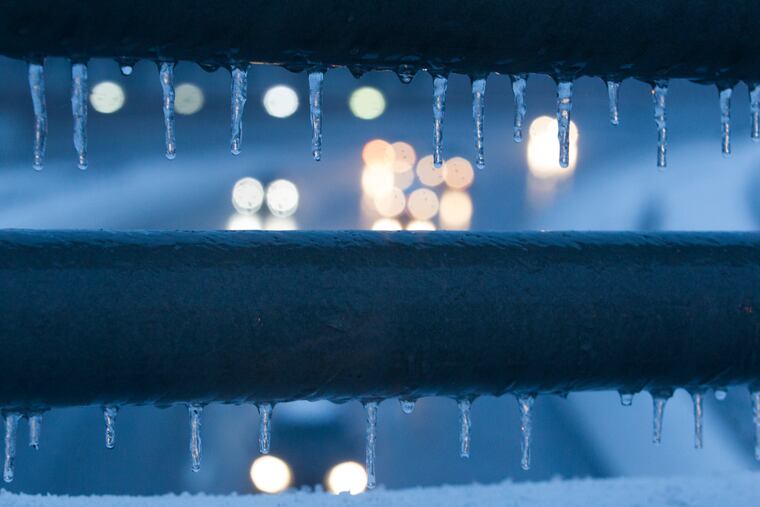Philly temperatures are heading for the 20s after coldest day since Feb. 29. Warmup coming
Temperatures Thursday morning will reach their lowest point since the pre-lockdown days. But the cold won't last.

For the first time since the days when restaurants could seat diners indoors at full capacity, bars could serve deep into the night, and people could crowd into sports arenas, Philadelphia’s temperatures are due to visit the 20s Thursday morning.
The temperature didn’t get past 40 Wednesday, the coldest daily high temperature since Feb. 29, nad after dark they dropped below freezing officially at the Philadelphia International Airport measuring station for the first time this season.
Temperatures were due to fall into the mid-20s overnight, depths not reached since March 1.
The front that sent the brittle leaves scurrying with gusts past 30 mph on Tuesday set off some light snow from late morning into early afternoon in the Poconos as temperatures up that way fell to freezing.
» READ MORE: Expect warm weather, with above normal temperatures, this winter in Philly
That won’t be happening around the Philly area for a while, said Trent Davis, a National Weather Service meteorologist in the Mount Holly office.
This being the time of year when the atmosphere can’t quite make up its mind what it wants to be, come the weekend it will be partial to April, with highs heading back into the 60s, as cold settles in the West and warmth in the East.
And forecasters at the government’s Climate Prediction Center aren’t seeing a precocious start to winter, with the odds favoring above-normal temperatures throughout most of the country for the rest of the month.
The fate of the winter is tied strongly to the strength of the polar vortex, whose swirling winds allow cold air to build near the poles. When it weakens, the chill can spill into the midlatitudes.
» READ MORE: Arctic sea-ice extent nears a record low, despite growth during a frigid winter
So far, said Judah Cohen, a scientist with the Atmospheric and Environmental Research firm, in Massachusetts, the vortex has been having a grand old time skating in circles around the Arctic.
“If it continues to strengthen, it could be hard to weaken in the near term,” he said. "There are suggestions to me that it could weaken but nothing concrete. I was in bigger despair last week. The trends are going in the right direction.”
Cohen said he is skeptical of the longer-term outlooks since computer models have been having a particularly rough time figuring out what’s going on in the Arctic, perhaps thrown off the scent by the increases in ice-free waters.
In any event, the chill around here will be short-lived. The forecast high Thursday, 50, would be normal for Dec. 1, but it is expected to crest past 60 Friday and Saturday, normal for Nov. 1.
Temperatures Wednesday were typical for the dead of winter.
The first official freezing reading at the airport arrived slightly behind schedule: On average in the 21st century, it has been occurring around Nov. 14.
Davis said freezing temperatures already had visited most of the city before Wednesday. It’s tougher to get there at the airport station, which isn’t far from runways, buildings, a river, and a swamp.
» READ MORE: Where is temperature measured in Philly, and why?
The average first-freeze day has been wildly variable, ranging from Nov. 18 in the 1930s to Oct. 25 in the 1960s.
Still, the trend of later first-freeze dates has been evident, tracking well with increases in nighttime temperatures worldwide.
As for what a November temperature in the 20s might say about what’s ahead, last year the official readings fell into the mid-20s on the 9th, 12th, 13th, and 14th.